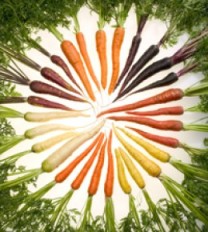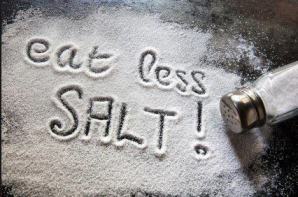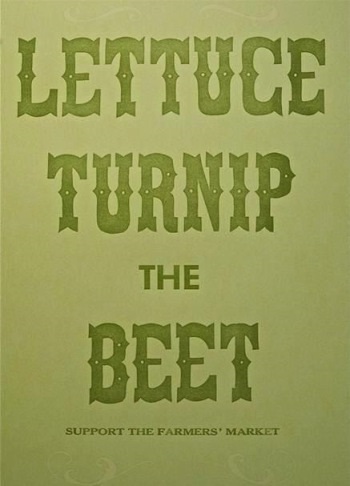Ever wonder what the secret is behind Bugs Bunny’s sharp mind and active body? Yes of course, it is carrot!
 The juicy carrot is one of the most liked vegetable by millions of people all over the world. It serves as a crunchy addition to salads and is also a healthy choice for snacking. Besides its natural sweetness, delicious taste and revitalizing ability, the vegetable contains very important nutrients that are important for various organs such as eyes, skin, teeth and digestive system.
The juicy carrot is one of the most liked vegetable by millions of people all over the world. It serves as a crunchy addition to salads and is also a healthy choice for snacking. Besides its natural sweetness, delicious taste and revitalizing ability, the vegetable contains very important nutrients that are important for various organs such as eyes, skin, teeth and digestive system.
The vegetable derived its name from Greek word, “karoton”, where kar means horn shaped. The substance called beta-carotene found in carrot has actually been derived from the word karoton. Carrots are being cultivated since thousands of years in central Asia and the Middle East and also in some parts of Europe. It was brought to North America in the 16th Century for the first time. Currently China is the largest producer of carrots in the world.
You will find ample amount of vitamin A, beta-carotenes, anti-oxidants and minerals stored in it. The juice of the carrot is equally good and used in Juice Therapy Remedies for curing several diseases. It is recommended by many doctors to take at least one glass of carrot juice, especially children; it will help you and your child combat many diseases. The benefits that carrot juice will provide you will compel you to call it a Miracle juice.
Now let’s take a review of what carrot has to offer for your health.
The magic of Beta-carotene
There is 8285µg of beta-carotene found in 100g of fresh carrots. It is known to be one of the most powerful anti-oxidant that helps your body to combat against oxygen-free harmful radicals. These carotenes are converted by the liver into Vitamin A, which helps in improving vision, sperm production, maintains epithelial integrity and also helps in growth and development of the body.
Improves vision
If you want sharp eye sight, increase the intake of carrot. The vitamin A obtained by carrot also helps to improve night vision. Carrot is known to cure vision related problems such as senile cataracts and macular degeneration. Researches prove that 40% of people who take a lot of beta-carotene found in carrots, have a lower risk of developing macular degeneration.
Cure for Cancer
It has been discovered that carrots reduce the risk of developing several types of Cancers such as breast cancer, colon cancer and lung cancer. Two of the components found in it called falcarinol and falcarindiol are known to have anticancer properties. A research conducted on mice proved that carrots lower the risk of developing cancer by 1/3.
Falcarinol is beneficial as a natural pesticide and this compound is only known to be found in carrots. It also protects from fungal diseases.
Beneficial for younger looking and glowing skin
Forget about the beauty treatments to enhance your skin health, use natural remedy such as carrot. Again with the help of high levels of beta-carotene acting as antioxidants, carrots halt the damages done to the cells of the body during the ongoing process of metabolism. This stops the aging of the cells.
Also if you want to protect your skin from the harmful damages of the sun, increase the intake of carrots. The vitamin A and antioxidants present in it, provides your skin with a shield that protects you from harmful sunrays. The lack of vitamin A can cause skin and hair dryness, premature wrinkling, acne, blemishes and pigmentation, to combat these problems make carrot a part of your daily diet.
If you want glowing skin apply a mask of carrot juice and honey on the face. So carrot acts as a complete skin treatment, from both inside and outside.
Improves Heart health
Three of the components found in carrots i.e. alpha carotene, beta carotene and lutein are known to lower the risk of developing heart diseases. The soluble fibers present in carrots when bind with bile acids, help to reduce the cholesterol levels.
It also saves us from strokes and researches have proven that. A study conducted by Harvard University proved that people who eat at least 6 carrots in a week are not at a risk of getting a stroke as compared to the people who take it once a week.
 Carrot as a natural Cleanser
Carrot as a natural Cleanser
The Vitamin A present in carrot helps the liver to flush out all the harmful toxins away from the body. It is also helpful in the reduction of bile and fat production in the liver. There are some important fibers present in the carrot that regulates the bowel movements and clean out colon.
Carrot as a Powerful Antiseptic
Many herbalists use carrots to prevent several infections. You can treat cuts and wounds by placing raw grated carrots on them.
Effective for teeth and gum health
When you take a bite of a juicy carrot it not only provides you with its sweet taste but it also helps in maintaining your oral health. The food particles and plaque is scraped off with the help of these crunchy carrots. When we chew a raw carrot, it stimulates our gums and triggers the production of saliva that is alkaline in nature, this balance out the acid formation and also reduces the growth of bacteria causing cavity. There are some important minerals found in carrot that helps to protect against tooth decay.
How carrots should be used?
There are over 100 species of carrots available in a variety of colors such as orange, red, purple, white, yellow and green. But when you choose to eat carrots, try to select the ones that are deep orange in color because they are known to contain more beta-carotene.
The nutrients contained in carrots are tightly enclosed in protein sacs present inside them, these nutrients can easily be obtained by either heating or juicing the carrots. The carotenoids availability is increased by 600% when carrots are cooked in fats or by juicing them.
Two glasses of carrot juice a day can boost our immunity up to 70% so try to incorporate more of this vegetable to your diet on daily basis.
Published by MyHealthList.net
 Salt (sodium) is one of the minerals that the body needs on a daily basis. Together with potassium, it helps to regulate the body’s water levels.
Salt (sodium) is one of the minerals that the body needs on a daily basis. Together with potassium, it helps to regulate the body’s water levels.



















